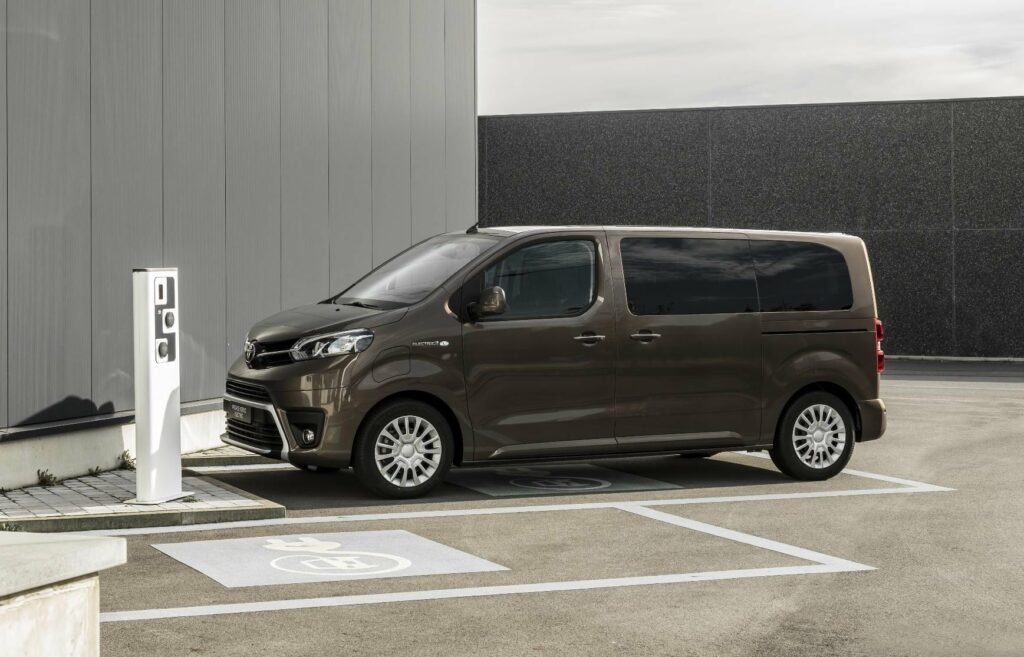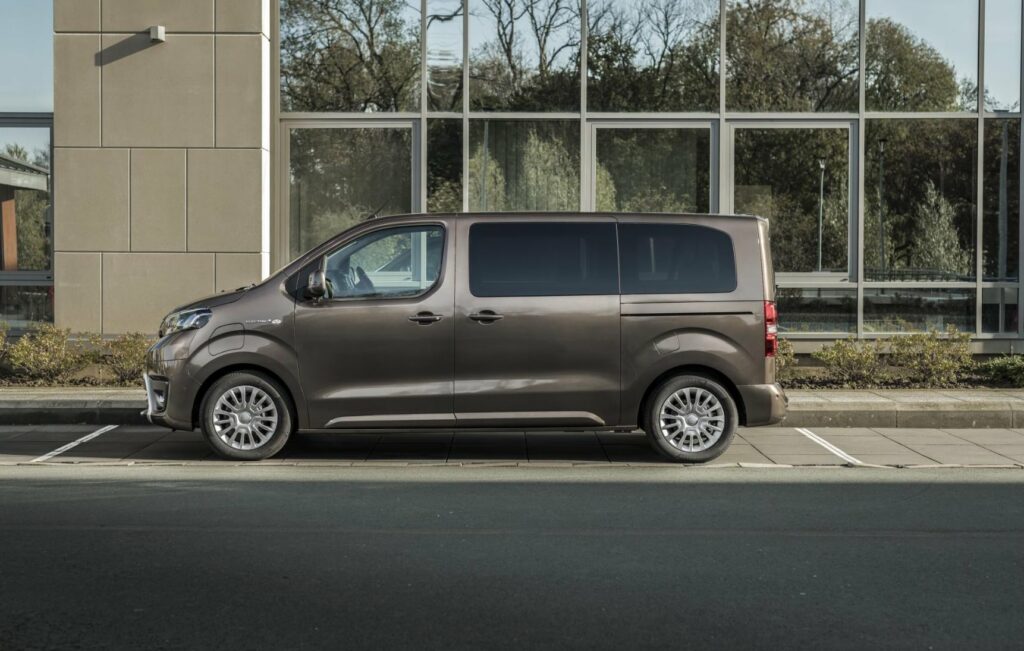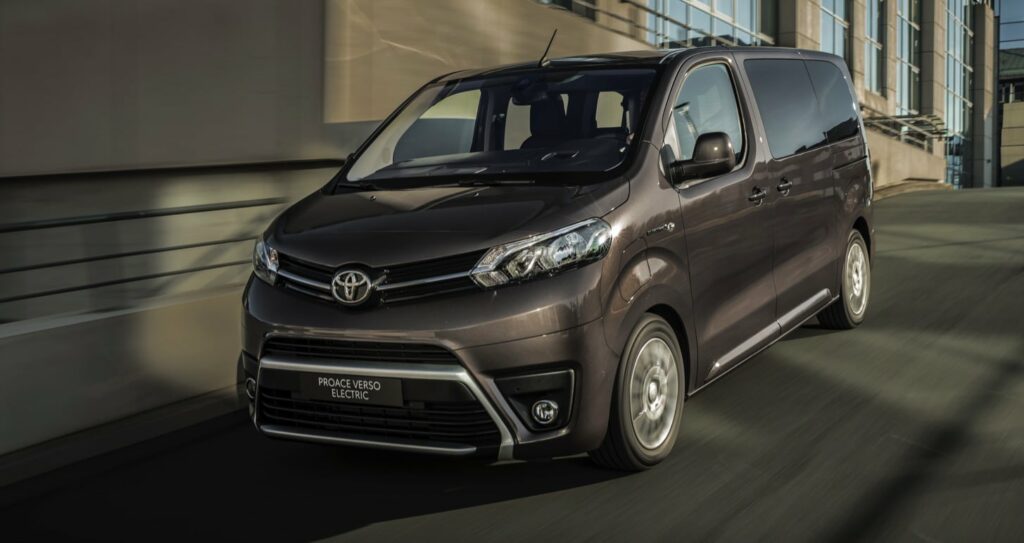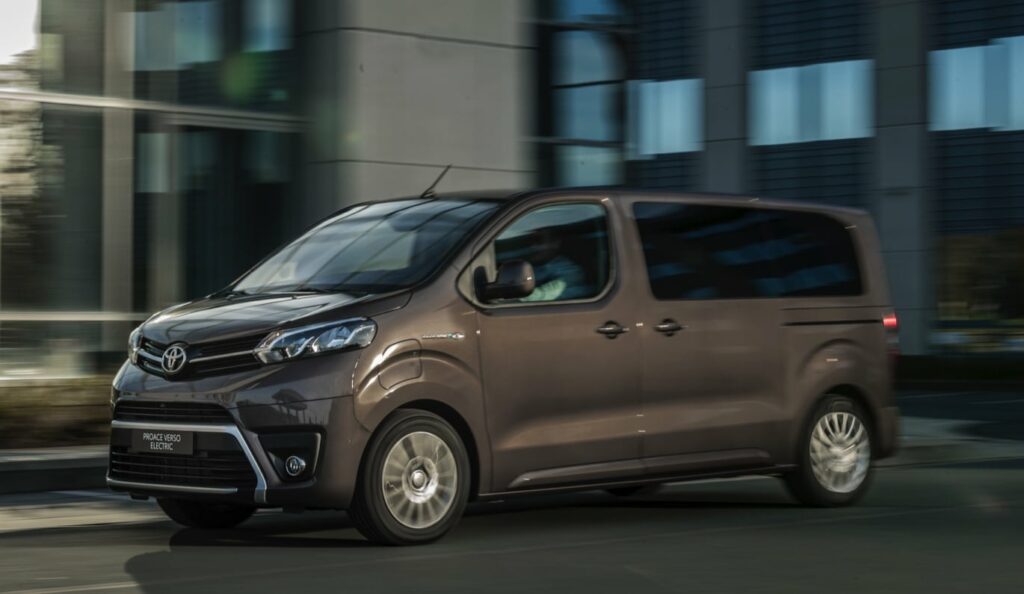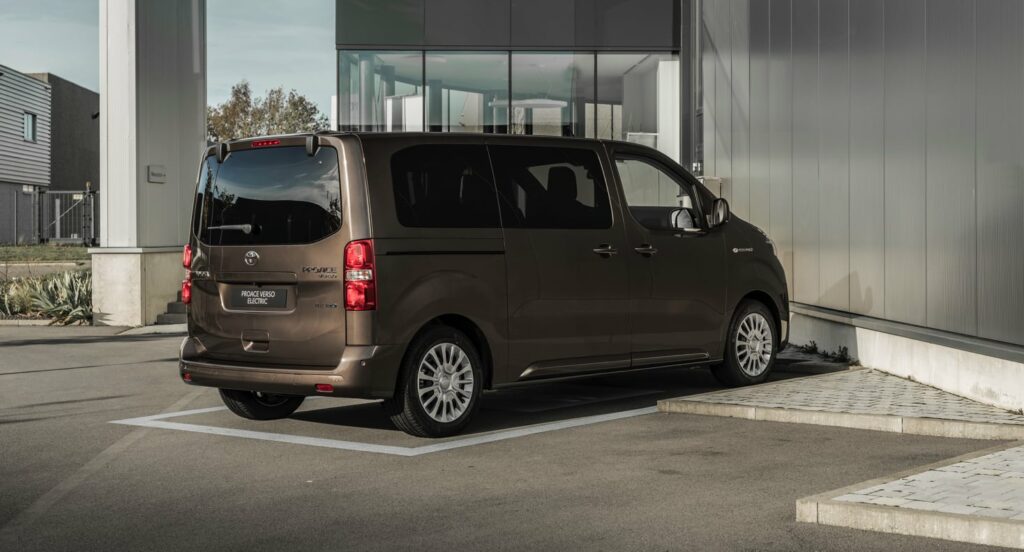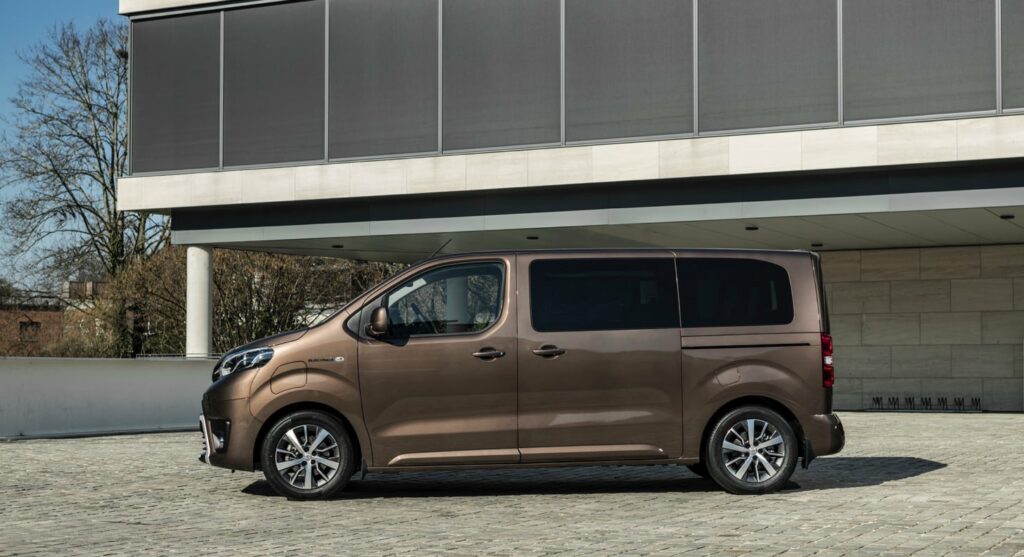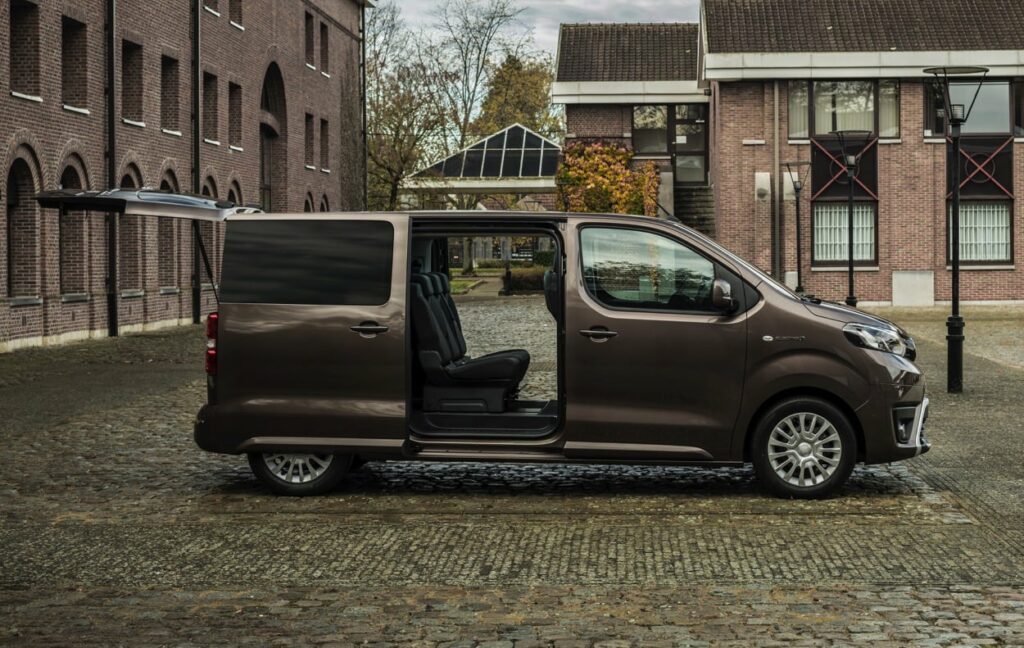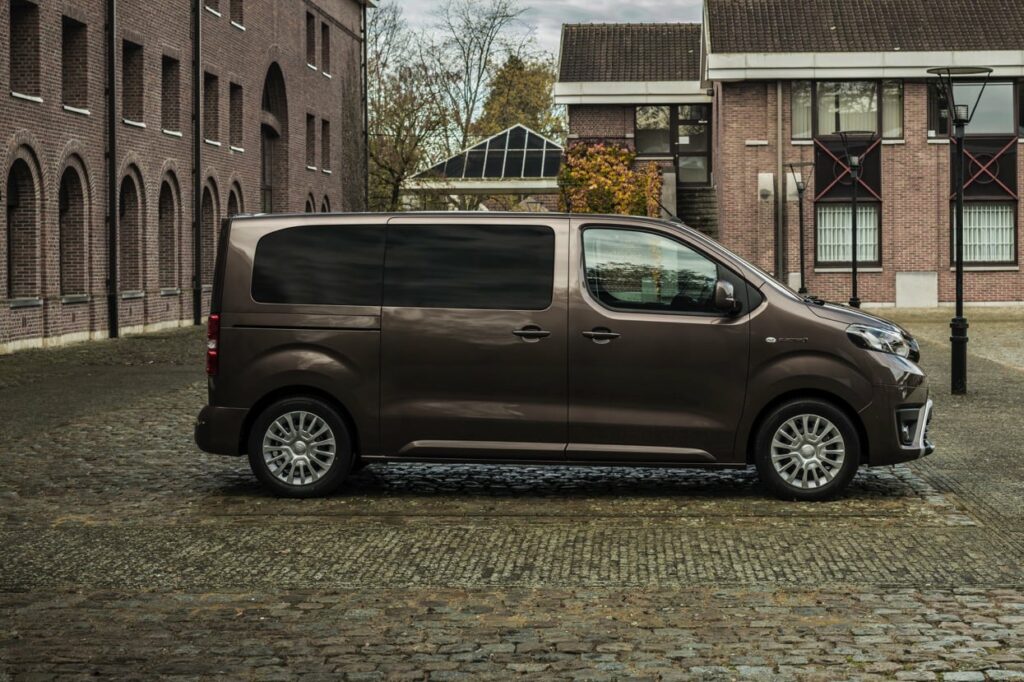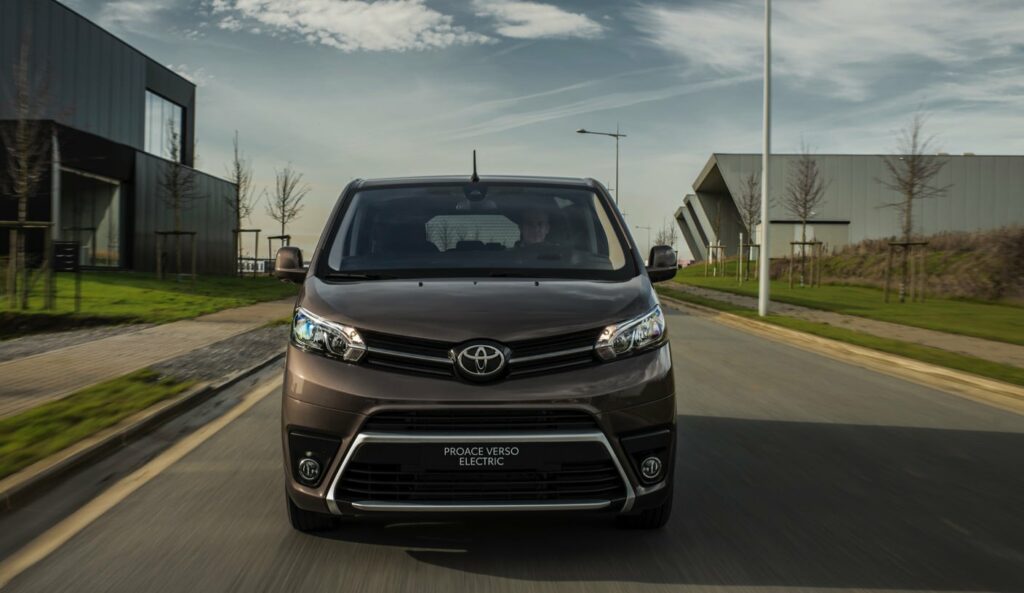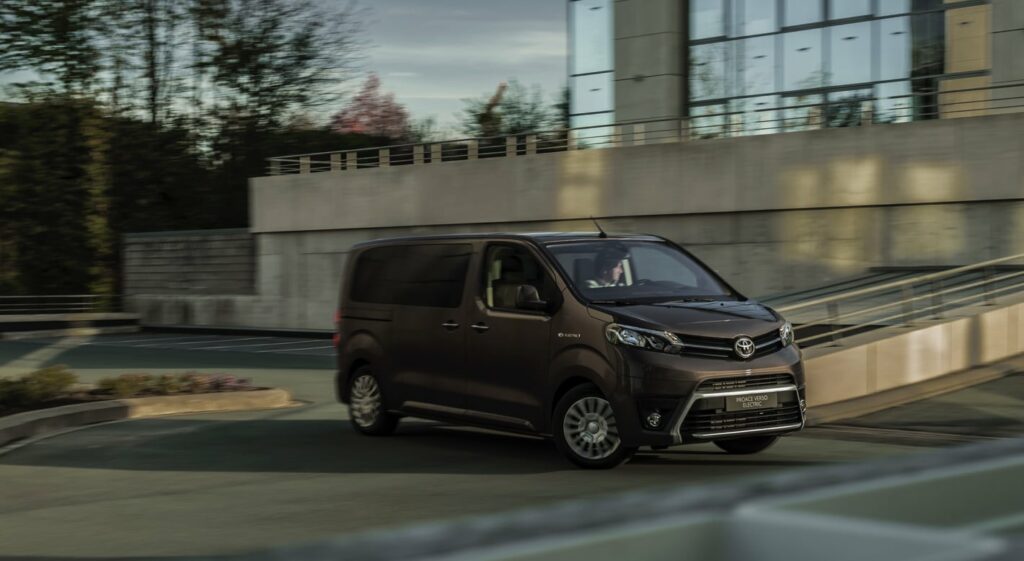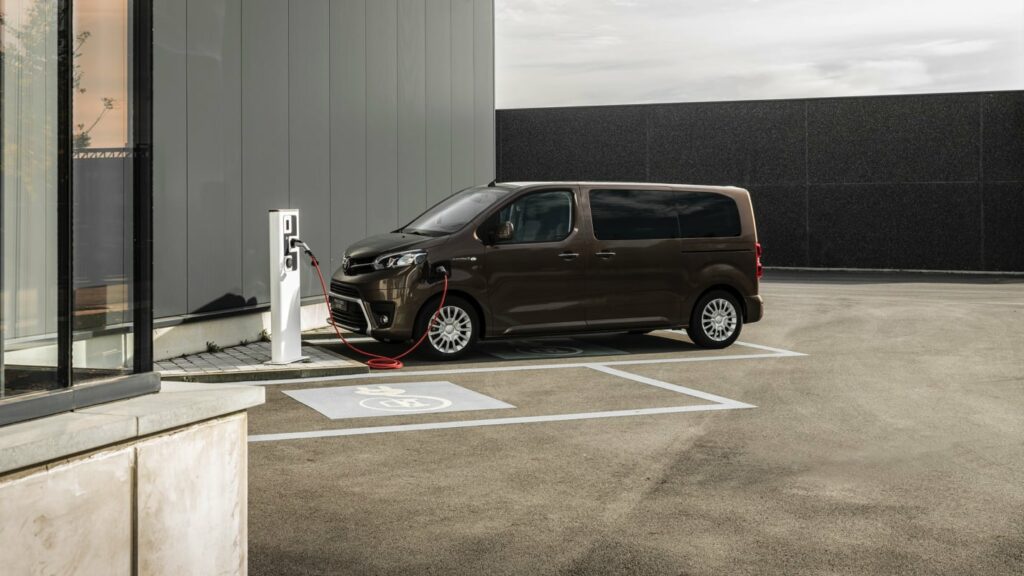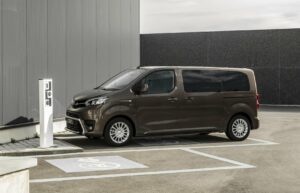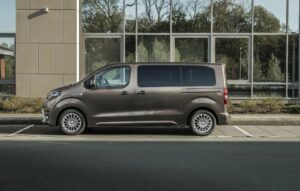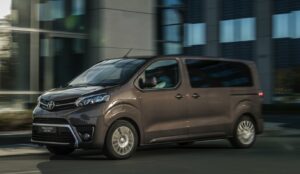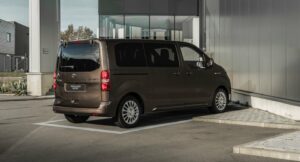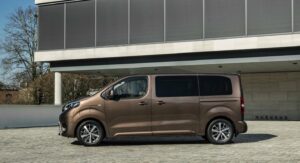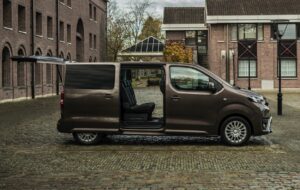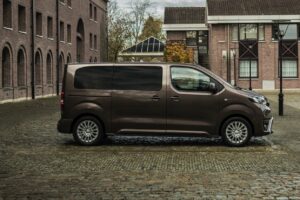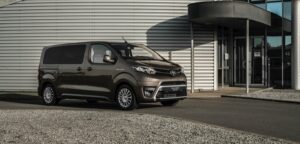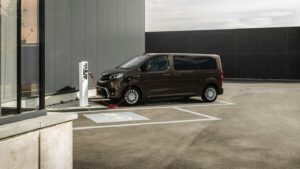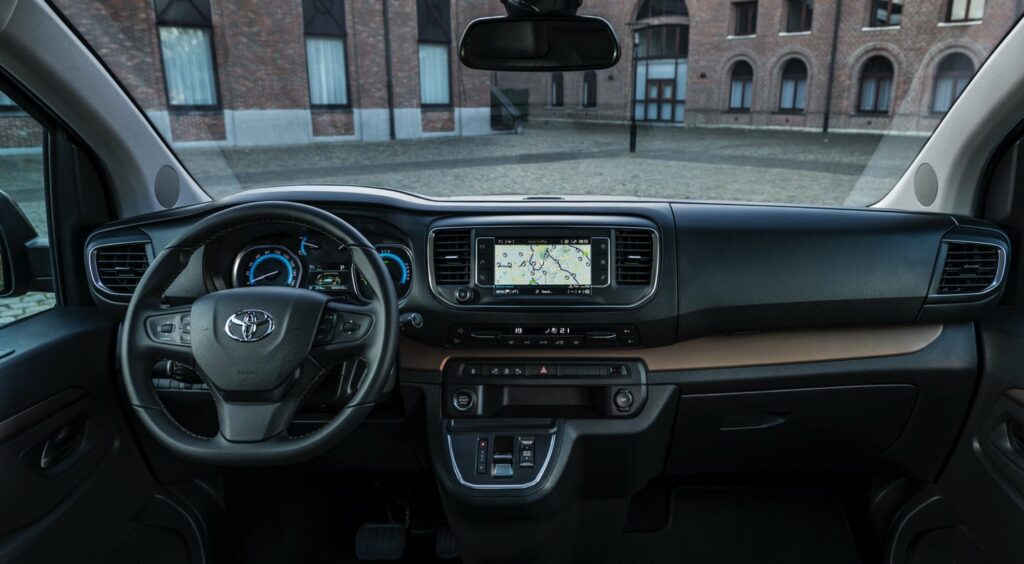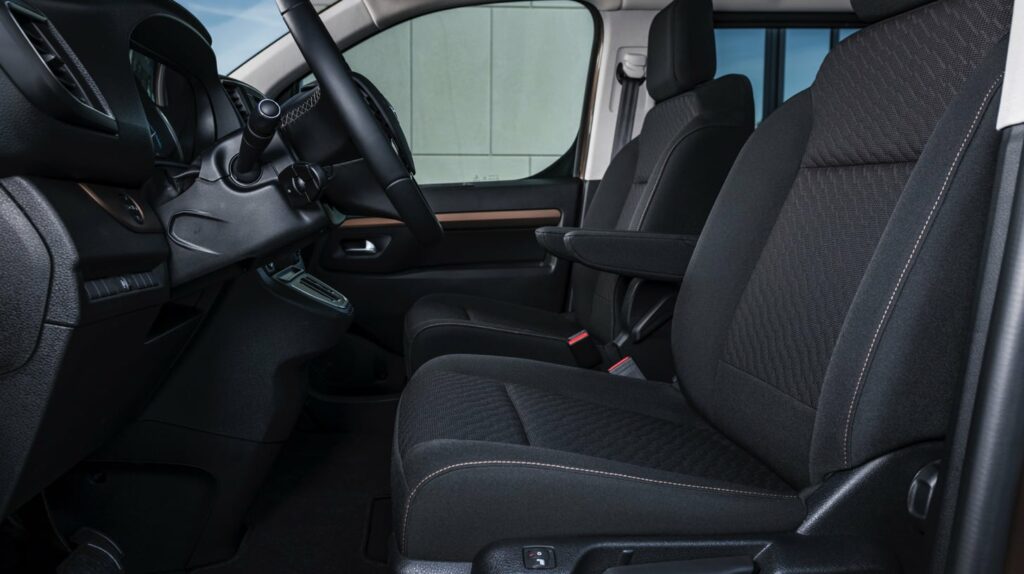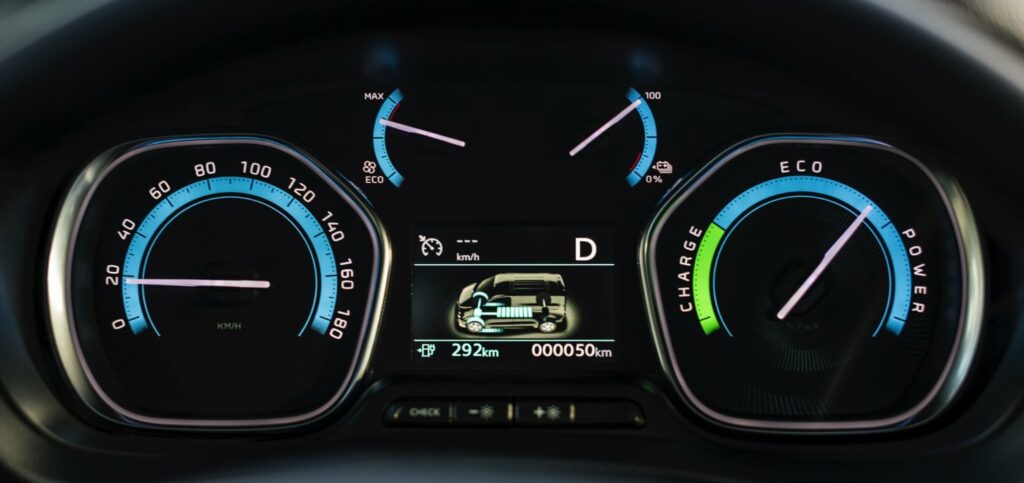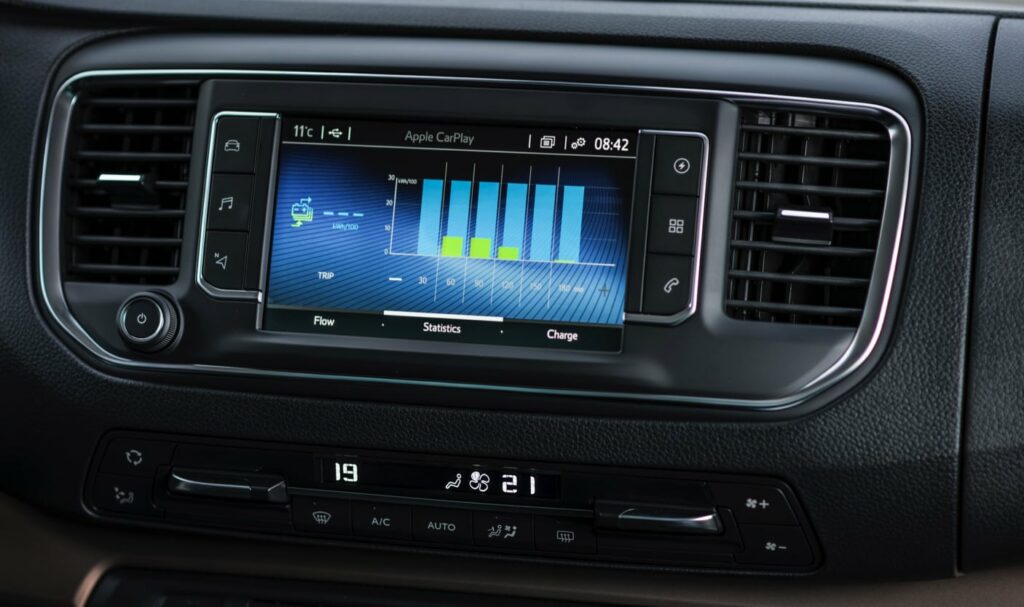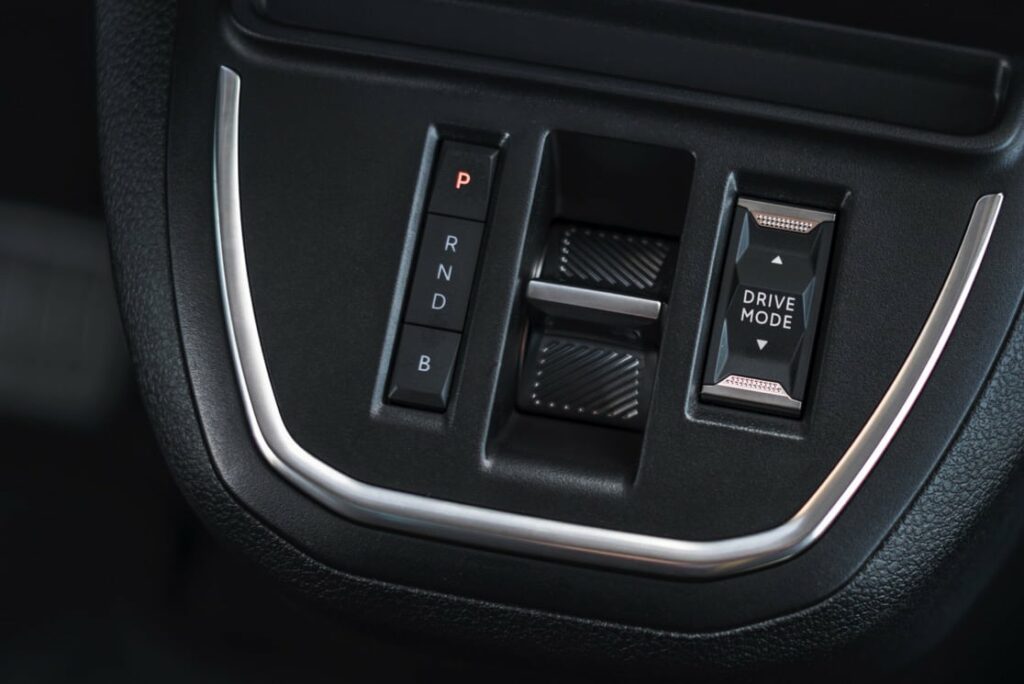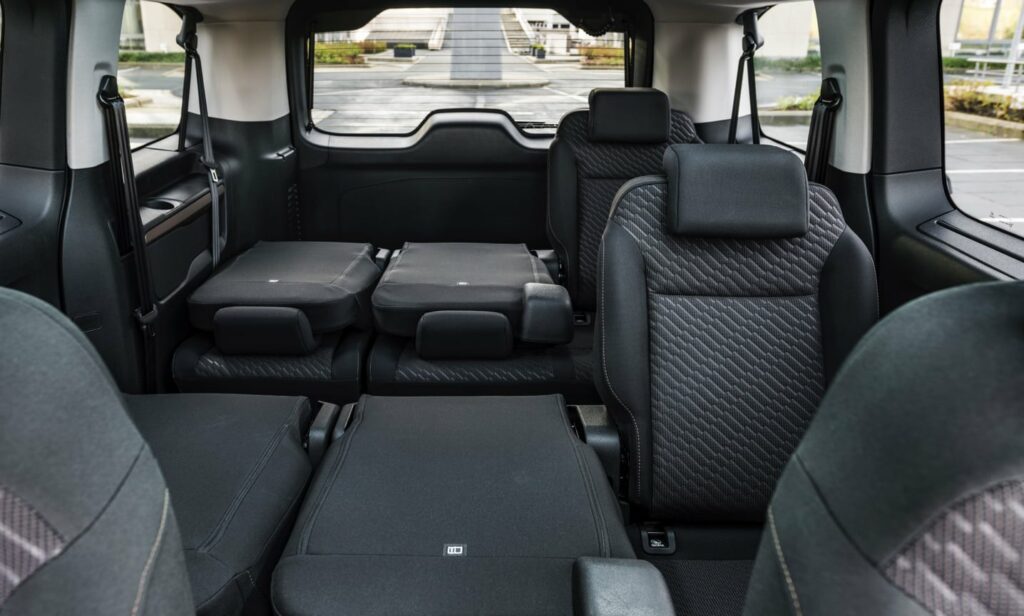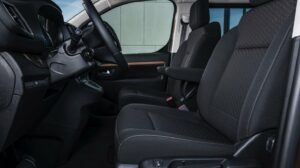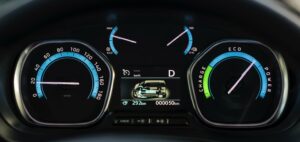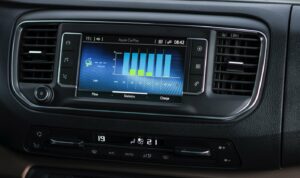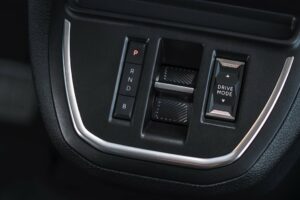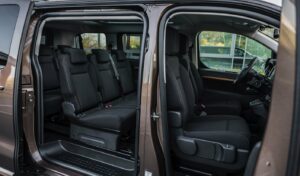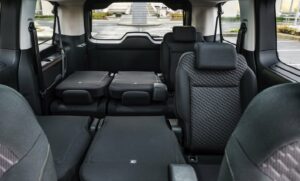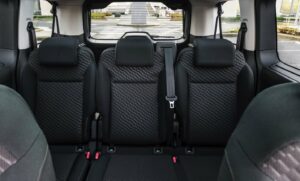Toyota PROACE Verso M 75 kWh
The Toyota PROACE Verso M 75 kWh is another electric van produced by Toyota as part of the PROACE Verso line. It shares many similarities with the PROACE Verso L 75 kWh but differs in its smaller size and slightly different features.

Like its larger counterpart, the PROACE Verso M 75 kWh is equipped with an electric motor that produces 100 kW and 260 Nm of torque. Its top speed is 130 km/h and acceleration from 0 to 100 km/h takes 13.1 seconds. The range of the van on a single charge is up to 250 km, depending on driving conditions and usage.
The PROACE Verso M 75 kWh has a maximum payload of 915 kg and a trunk volume of up to 3.6 cubic meters. It is designed to be practical and versatile, with features such as folding seats and sliding doors for easy loading and unloading.
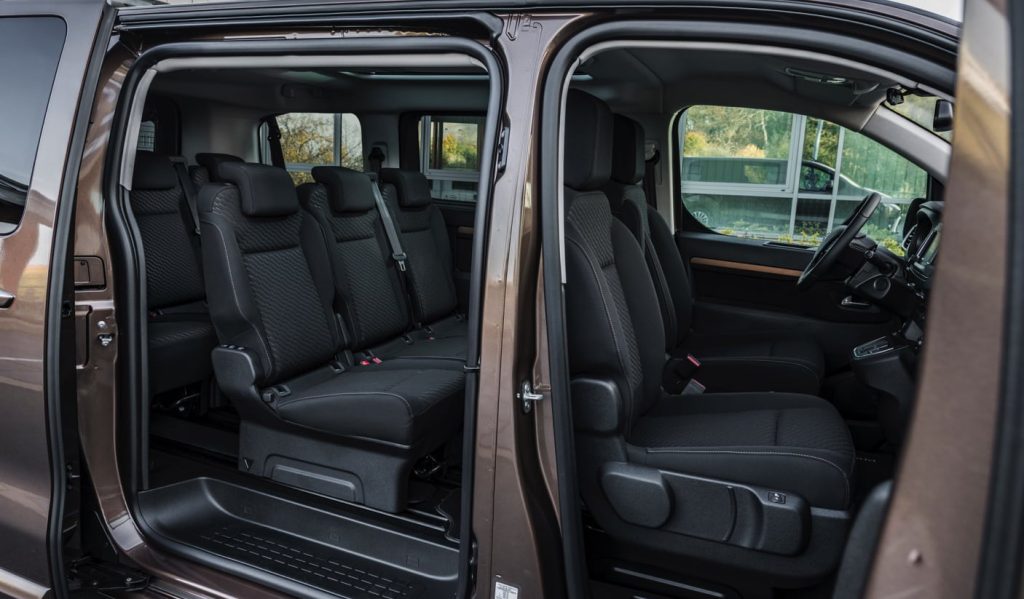
In addition to the electric powertrain, the PROACE Verso M 75 kWh is equipped with a number of safety systems, including a pre-collision system, lane departure warning, and adaptive cruise control.
Overall, the Toyota PROACE Verso M 75 kWh is a capable electric van that offers good performance, practicality, and safety features. It is an attractive option for businesses looking for a smaller electric van that can carry a decent payload and provide a good range.
| Performance | |
| Acceleration 0 – 100 km/h | 13.1 sec |
| Top Speed | 130 km/h |
| Electric Range | 250 km |
| Total Power | 100 kW (136 PS) |
| Total Torque | 260 Nm |
| Drive | Front |
| Battery and Charging | |
| Battery Capacity | 75.0 kWh |
| Battery Useable | 65.0 kWh |
| Europe | |
| Charge Port | Type 2 |
| Port Location | Left Side – Front |
| Charge Power | 7.4 kW AC |
| Charge Time (0->250 km) | 10h30m |
| Charge Speed | 24 km/h |
| Fastcharge Port | CCS |
| FC Port Location | Left Side – Front |
| Fastcharge Power (max) | 100 kW DC |
| Fastcharge Time (25->200 km) | 36 min |
| Fastcharge Speed | 290 km/h |
| Energy Consumption | |
| EVDB Real Range | |
| Range | 250 km |
| Vehicle Consumption | 260 Wh/km |
| CO2 Emissions | 0 g/km |
| Vehicle Fuel Equivalent | 2.9 l/100km |
| WLTP Ratings (TEL) | |
| Range | 330 km |
| Rated Consumption | 269 Wh/km |
| Vehicle Consumption | 197 Wh/km |
| CO2 Emissions | 0 g/km |
| Rated Fuel Equivalent | 3.0 l/100km |
| Vehicle Fuel Equivalent | 2.2 l/100km |
| WLTP Ratings (TEH) | |
| Range | 314 km |
| Rated Consumption | 280 Wh/km |
| Vehicle Consumption | 207 Wh/km |
| CO2 Emissions | 0 g/km |
| Rated Fuel Equivalent | 3.1 l/100km |
| Vehicle Fuel Equivalent | 2.3 l/100km |
| TEL = Test Energy Low | TEH = Test Energy High | |
|
Rated = official figures as published by manufacturer. Rated consumption and fuel equivalency figures include charging losses.
|
|
|
Vehicle = calculated battery energy consumption used by the vehicle for propulsion and on-board systems.
|
|
| Real Energy Consumption Estimation between 173 – 371 Wh/km | |
| City – Cold Weather * | 241 Wh/km |
| Highway – Cold Weather * | 371 Wh/km |
| Combined – Cold Weather * | 295 Wh/km |
| City – Mild Weather * | 173 Wh/km |
| Highway – Mild Weather * | 302 Wh/km |
| Combined – Mild Weather * | 232 Wh/km |
| Energy use for each trip will vary considerably depending on the driver and the conditions. Therefore, we have provided a range of estimates which can be useful in developing an understanding of the potential benefits of this technology. | |
| Dimensions and Weight | |
| Length | 4956 mm |
| Width | 1920 mm |
| Width with mirrors | 2204 mm |
| Height | 1890 mm |
| Wheelbase | 3275 mm |
| Weight Unladen (EU) | 2140 kg |
| Gross Vehicle Weight (GVWR) | 3100 kg |
| Max. Payload | 1035 kg |
| Cargo Volume | 603 L |
| Cargo Volume Max | 3061 L |
| Cargo Volume Frunk | 0 L |
| Roof Load | 170 kg |
| Tow Hitch Possible | Yes |
| Towing Weight Unbraked | 750 kg |
| Towing Weight Braked | 1000 kg |
| Vertical Load Max | 60 kg |
| Miscellaneous | |
| Seats | 8 people |
| Isofix | Yes, 3 seats |
| Turning Circle | 12.4 m |
| Platform | PSA EMP2 |
| Car Body | Small Passenger Van |
| Segment | N – Commercial |
| Roof Rails | No |
| EV Dedicated Platform | No |
Home and Destination Charging (0 -> 100%)
A public charging station is required to use the highest possible charging rate. The EVSE/charging station’s charging capacity affects how long it takes to fully charge the battery. The table below shows all possible options for fully charging the Toyota PROACE Verso M 75 kWh.
In Europe, plugging an electric car into an outlet is often as easy as plugging it into a household outlet, but there are differences from country to country. The table below shows the different ways to charge the Toyota PROACE Verso M 75 kWh, but in some countries some chargers may not be available.
Type 2 ( IEC 62196)

| Charging Point | Max. Power | Power | Time | Rate |
| Standard 7.4 kW On-Board Charger | ||||
| Wall Plug (2.3 kW) | 230V / 1x10A | 2.3 kW | 33h15m | 8 km/h |
| 1-phase 16A (3.7 kW) | 230V / 1x16A | 3.7 kW | 20h45m | 12 km/h |
| 1-phase 32A (7.4 kW) | 230V / 1x32A | 7.4 kW | 10h30m | 24 km/h |
| 3-phase 16A (11 kW) | 230V / 1x16A | 3.7 kW | 20h45m | 12 km/h |
| 3-phase 32A (22 kW) | 230V / 1x32A | 7.4 kW | 10h30m | 24 km/h |
| Optional 11.0kW On-Board Charger | ||||
| Wall Plug (2.3 kW) | 230V / 1x10A | 2.3 kW | 33h15m | 8 km/h |
| 1-phase 16A (3.7 kW) | 230V / 1x16A | 3.7 kW | 20h45m | 12 km/h |
| 1-phase 32A (7.4 kW) | 230V / 1x32A | 7.4 kW | 10h30m | 24 km/h |
| 3-phase 16A (11 kW) | 400V / 3x16A | 11 kW | 7 hours | 36 km/h |
| 3-phase 32A (22 kW) | 400V / 3x16A | 11 kW | 7 hours | 36 km/h |
Fast Charging (10 -> 80%)
If you want to enjoy driving an electric car, one of the most important features to consider is the number of miles per hour the car can travel while charged. This is called the “range” of the car. All electric cars have a certain range, even if they are 100% charged. This is because they do not have an internal combustion engine to lean on if you need to drive a long distance.
Max. Power: The maximum power provided by the charging point
Avg. Power: The average power provided by the charging point during a session of 10% to 80%.
Time: the time it takes to charge from 10% to 80%
Speed: the average charging rate during the session of 10% to 80%
Combined Charging System (CCS Combo 2)
| Charging Point | Max. Power | Avg. Power | Time | Rate |
| CCS (50 kW DC) | 50 kW | 40 kW | 72 min | 140 km/h |
| CCS (100 kW DC) | 100 kW | 79 kW | 36 min | 290 km/h |
| CCS (150 kW DC) | 100 kW | 79 kW | 36 min | 290 km/h |
| Brand | Toyota |
| Model | PROACE Verso M 75 kWh |
| Body Style | Small Passenger Van |
| Car Engine | electric |
| Motor power | 100 |
| Maximum Torque, Nm | 260 |
| Battery Energy, kWh | 75.0 |
| Power reserve (NEDC/EPA/WLTP), km | - / - / 250 |
| Level Charging (230/400/DC), hours | - / 7.0 / 0.36 |
| Electrical Acceleration, 0-100 km/h (0-62.1 mph) in sec | 13.1 |
| Top Speed, km/h | 130 |
